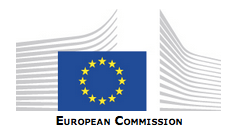The European Commission has decided Europe needs more 4G/LTE spectrum to run all the high speed mobile data services citizens in member states will require in the coming years. Today it’s announced a plan to refarm 120MHz of spectrum around the 2GHz band for 4G services. The decision makes it mandatory for member states to liberalise the spectrum — currently licensed for 3G services — for 4G use by June 30 2014.
The EC said the move will provide the European Union with up to twice the amount of spectrum for high-speed wireless broadband as the U.S. European Commission Vice President Neelie Kroes said in a statement: “This extra spectrum for 4G in Europe means we can better meet the changing and growing demand for broadband. I want to see Member States acting swiftly to change existing licenses. We all win from faster wireless connections in Europe.”
In the U.K. the band in question is the 2.1GHz band — which all four main carriers license for 3G services (namely 3, EE, O2 and Vodafone). A spokesman for U.K. telecoms regulator Ofcom told TechCrunch it would be consulting with industry on liberalising the spectrum, prior to any commencement of the EC decision.
Ofcom’s spokesman could not provide an estimate for how long the consultation process might take at this point but provided the following Ofcom statement: “The European Commission’s decision is consistent with Ofcom’s long standing objective to reduce regulation and increase more flexible use of spectrum wherever appropriate. Before any changes are made in the UK, we will first need to consult with stakeholders.”
The EC’s Release follows below in full
Digital Agenda: Commission Decision paves the way for 4G in Europe
The European Commission has today decided to add another 120 MHz to the radio spectrum portfolio for 4G technologies, such as LTE (Long Term Evolution), around the 2 GHz band. This band is currently solely used for UMTS (Universal Mobile Telecommunications System) wireless communications, known as 3G networks. The Decision makes it mandatory for Member States to open the relevant spectrum by 30 June 2014 at the latest, and lays down harmonised technical conditions to allow coexistence between different technologies. On this basis the EU will enjoy up to twice the amount of spectrum for high speed wireless broadband as in the United States, namely around 1000 MHz.
The Commission’s decision means mobile operators will have more opportunities to invest in improved mobile networks, which benefits the whole economy, and consumers will, over time, enjoy faster data transfers and more broadband services. Greater access to spectrum for 4G technologies will make a substantial contribution to the Digital Agenda broadband target of universal EU broadband coverage of at least 30 Mb/s by 2020 (see IP/10/581,MEMO/10/199 and MEMO/10/200).
European Commission Vice President Neelie Kroes said: “This extra spectrum for 4G in Europe means we can better meet the changing and growing demand for broadband. I want to see Member States acting swiftly to change existing licenses. We all win from faster wireless connections in Europe.”
The Decision enforces the harmonised liberalisation of the 2 GHz band (1920-1980 MHz paired with 2110-2170 MHz) in all Member States, avoiding internal market fragmentation in the future use of this band.
Introducing flexibility of use in spectrum bands by removing technology restrictions offers a cost-effective way for deploying advanced wireless infrastructure in response to market demand.
Background
Radio spectrum is an extremely valuable but increasingly scarce resource. Its socio-economic importance has dramatically increased as wireless services such as broadband access and the ‘internet of things’ become pervasive through all domains of business and society. Industry sources predict that global mobile data traffic will increase by 26 % annually by 2015. By then, more than 7 billion phones, tablets and other mobile devices will be connectable to the Internet.
Exploding wireless data traffic alongside insufficient vacant spectrum calls for a smarter approach to spectrum management. This must include better utilisation of spectrum bands already being used, for example through removing technology restrictions and spectrum sharing.
The paired terrestrial 2 GHz band (1920-1980 MHz paired with 2110-2170 MHz) has been traditionally used by UMTS communications (3G networks) as a result of the so-called UMTS Decision adopted in 1999, which launched the coordinated and progressive introduction of UMTS across the EU by 1 January 2002.
In implementing the Radio Spectrum Policy Programme, and in particular meeting the target of at least 1200 MHz for wireless broadband services, running the spectrum inventory as well as flexible and shared spectrum use are priorities of the EU spectrum reform to stimulate innovation, efficient use and investment.
Therefore, the Commission Decision mandates the flexible use of the 1920-1980 MHz and 2110-2170 MHz band for electronic communication services in the EU based on advanced wireless technologies, such as LTE and further advanced technologies. Industry developments show that these technologies are increasingly capable of offering 30 Mbps to many users at the same time, thus giving consumers access to high speed broadband at competitive prices.
The Commission is also considering a follow-up measure on the unpaired terrestrial 2 GHz spectrum (1900-1920 MHz and 2010-2025 MHz) which is currently allocated to use by UMTS networks but remains unused throughout the EU. Such an initiative will aim at ensuring efficient use of the unpaired bands that is most beneficial from an economic, social and environmental point of view by considering alternative applications to terrestrial mobile broadband and taking into account existing rights of use. In this regard, the Commission has already issued a Mandate to CEPT (European Conference of Postal and Telecommunications Administrations) to study suitable applications and develop appropriate technical conditions and sharing arrangements.
